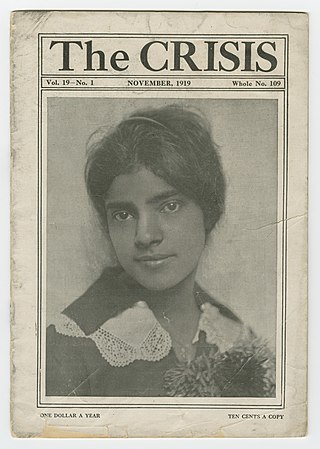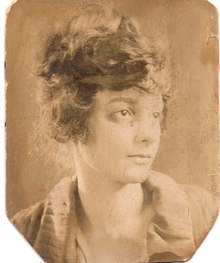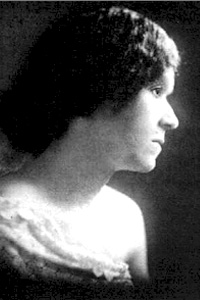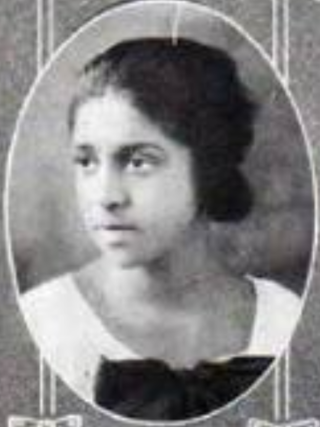Related Research Articles

The Crisis is the official magazine of the National Association for the Advancement of Colored People (NAACP). It was founded in 1910 by W. E. B. Du Bois (editor), Oswald Garrison Villard, J. Max Barber, Charles Edward Russell, Kelly Miller, William Stanley Braithwaite, and Mary Dunlop Maclean. The Crisis has been in continuous print since 1910, and it is the oldest Black-oriented magazine in the world. Today, The Crisis is "a quarterly journal of civil rights, history, politics and culture and seeks to educate and challenge its readers about issues that continue to plague African Americans and other communities of color."

Niggerati was the name used, with deliberate irony, by Wallace Thurman for the group of young African-American artists and intellectuals of the Harlem Renaissance. "Niggerati" is a portmanteau of "nigger" and "literati". The rooming house where he lived, and where that group often met, was similarly christened Niggerati Manor. The group included Zora Neale Hurston, Langston Hughes, and several of the people behind Thurman's journal FIRE!!, such as Richard Bruce Nugent, Jonathan Davis, Gwendolyn Bennett, and Aaron Douglas.

The Schomburg Center for Research in Black Culture is a research library of the New York Public Library (NYPL) and an archive repository for information on people of African descent worldwide. Located at 515 Malcolm X Boulevard between West 135th and 136th Streets in the Harlem neighborhood of Manhattan, New York City, it has, almost from its inception, been an integral part of the Harlem community. It is named for Afro-Puerto Rican scholar Arturo Alfonso Schomburg.

Regina M. Anderson was an American playwright and librarian. Influenced by Ida B. Wells and the lack of Black history teachings in school, Anderson became a key member of the Harlem Renaissance.

The American Negro Theatre (ANT) was co-founded on June 5, 1940 by playwright Abram Hill and actor Frederick O'Neal. Determined to build a "people's theatre", they were inspired by the Federal Theatre Project's Negro Unit in Harlem and by W. E. B. Du Bois' "four fundamental principles" of Black drama: that it should be by, about, for, and near African Americans.

Georgia Blanche Douglas Camp Johnson, better known as Georgia Douglas Johnson, was a poet and playwright. She was one of the earliest female African-American playwrights, and an important figure of the Harlem Renaissance.

The Lafayette Theatre(1912–1951), known locally as "the House Beautiful", was one of the most famous theaters in Harlem. It was an entertainment venue located at 132nd Street and 7th Avenue in Harlem, New York. The structure was demolished in 2013.

Fire!! was an African-American literary magazine published in New York City in 1926 during the Harlem Renaissance. The publication was started by Wallace Thurman, Zora Neale Hurston, Aaron Douglas, John P. Davis, Richard Bruce Nugent, Gwendolyn Bennett, Lewis Grandison Alexander, Countee Cullen, and Langston Hughes. The magazine's title referred to burning up old ideas, and Fire!! challenged the norms of the older Black generation while featuring younger authors. The publishers promoted a realistic style, with vernacular language and controversial topics such as homosexuality and prostitution. Many readers were offended, and some Black leaders denounced the magazine. The endeavor was plagued by debt, and its quarters burned down, ending the magazine after just one issue.

The Harlem Renaissance was an intellectual and cultural revival of African-American music, dance, art, fashion, literature, theater, politics and scholarship centered in Harlem, Manhattan, New York City, spanning the 1920s and 1930s. At the time, it was known as the "New Negro Movement", named after The New Negro, a 1925 anthology edited by Alain Locke. The movement also included the new African-American cultural expressions across the urban areas in the Northeast and Midwest United States affected by a renewed militancy in the general struggle for civil rights, combined with the Great Migration of African-American workers fleeing the racist conditions of the Jim Crow Deep South, as Harlem was the final destination of the largest number of those who migrated north.
Willis Richardson was an American playwright.

Eulalie Spence was a writer, teacher, director, actress and playwright from the British West Indies. She was an influential member of the Harlem Renaissance, writing fourteen plays, at least five of which were published. Spence, who described herself as a "folk dramatist" who made plays for fun and entertainment, was considered one of the most experienced female playwrights before the 1950s, and received more recognition than other black playwrights of the Harlem Renaissance period, winning several competitions. She presented several plays with W.E.B. Du Bois' Krigwa Players, of which she was a member from 1926 to 1928. Spence was also a mentor to theatrical producer Joseph Papp, founder of The Public Theater and the accompanying festival currently known as Shakespeare in the Park.
The Ethiopian Art Theatre — originally called the Chicago Folk Theatre, later the Colored Folk Theatre, also referred to as The Ethiopian Art Players — was an African American theatre company based out of Chicago, Illinois. The company was an influential albeit short-lived (1922/1923–1925) group founded during the Harlem Renaissance. There are differing views over the precise year that the company was founded, 1922 or 1923. The founder was Raymond O'Neil, a white theatre director, and its principal sponsor was Mrs. Sherwood Anderson, also white; though all its performers were African American. The organization was unique and controversial during its era, primarily for being one of the few African American Theatre Companies to perform European theatrical works, but also, among other things, for producing theatrical works of African American playwrights for both African American and Non-African American audiences.
Dick Campbell, born Cornelius Coleridge Campbell, was a key figure in black theater during the Harlem Renaissance. While a successful performer in his own right, Campbell is best known as a tireless advocate for black actors in general. As a theater producer and director, he helped launch the careers of several black theater artists, including Ossie Davis, Frederick O'Neal, Loften Mitchell, Helen Martin, and Abram Hill.
A number of theatre companies are associated with the Harlem Renaissance.
Arthur Paul Davis was an influential American university professor, literary scholar, and the writer and editor of several important critical texts such as The Negro Caravan, The New Cavalcade, and From the Dark Tower: Afro-American Writers 1900–1960. He was African-American. Influenced by the Harlem Renaissance, Davis has inspired many African-Americans to pursue literature and the arts.
Songs of the Harlem River: Forgotten One Acts of the Harlem Renaissance is a collection of five one-act plays written between 1920 and 1930 by several African-American playwrights at the time including Marita Bonner, Ralf M. Coleman, Georgia Douglas Johnson, Willis Richardson, and Eulalie Spence. Also included are poems by Sterling A. Brown, Langston Hughes, and Jessie Fauset.
The Chip Woman's Fortune is a 1923 one act play written by American playwright Willis Richardson. The play was produced by The Ethiopian Art Theatre and is historically important as the first serious work by an African American playwright to be presented on Broadway. Although Broadway had seen African American musical comedies and revues, it had never seen a serious drama.

Ruth Ada Gaines-Shelton was an American playwright and educator. She is a playwright of the Harlem Renaissance era and is best known for her allegorical comedy,The Church Fight, written in 1925.

Ottie Beatrice Graham Jefferson was an American writer associated with the Harlem Renaissance cultural movement.
References
- 1 2 3 Young, Harvey (2013). The Cambridge Companion to African American Theatre. Cambridge, England: Cambridge University Press.
- ↑ Hay, Samuel A. (1994). African American Theatre: A Historical and Critical Analysis . Cambridge, England: Cambridge University Press.
- ↑ Wintz, Finkelman, Cary, Paul (January 1, 2004). Encyclopedia of the Harlem Renaissance: A-J. Taylor & Francis.
{{cite book}}: CS1 maint: multiple names: authors list (link) - 1 2 Walker, Ethel Pitts. "Krigwa, a Theatre by, for, and about Black People." Theatre Journal, Vol. 40, No. 3, Perspectives in Theatre History (Oct., 1988), pp. 347-356
- ↑ "Bookreader demo".
- ↑ "20 LITTLE THEATRES ENTERED IN TOURNEY: Variety of Plays Listed in ...". New York Times. Apr 24, 1928.